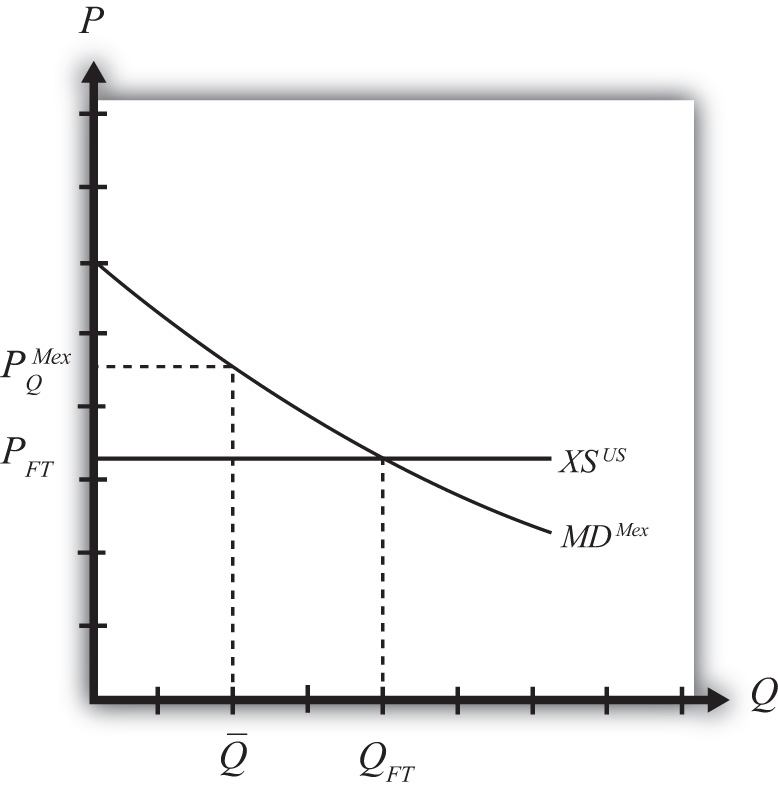This is “Import Quota: Small Country Price Effects”, section 7.13 from the book Policy and Theory of International Trade (v. 1.0). For details on it (including licensing), click here.
For more information on the source of this book, or why it is available for free, please see the project's home page. You can browse or download additional books there. To download a .zip file containing this book to use offline, simply click here.
7.13 Import Quota: Small Country Price Effects
Learning Objectives
- Identify the effects of an import quota on prices in both countries and the quantity traded in the case of a small country.
- Know the equilibrium conditions that must prevail in a quota equilibrium.
The small country assumption means that the country’s imports are a very small share of the world market—so small that even a complete elimination of imports would have an imperceptible effect on world demand for the product and thus would not affect the world price. Thus when a quota is implemented by a small country, there is no effect on the world price.
To depict the price effects of a quota, we use an export supply/import demand diagram shown in Figure 7.26 "Depicting a Quota Equilibrium: Small Country Case". The export supply curve is drawn as a horizontal line since the exporting country is willing to supply as much as the importer demands at the world price. The small importing country takes the world price as exogenous since it can have no effect on it.
Figure 7.26 Depicting a Quota Equilibrium: Small Country Case

When the quota is placed on imports, it restricts supply to the domestic market since fewer imports are allowed in. The reduced supply raises the domestic price. The world price is unaffected by the quota and remains at the free trade level. In the final equilibrium, two conditions must hold—the same two conditions as in the case of a large country, namely,
and
This implies that, in the case of a small country, the price of the import good in the importing country must rise to the level at which the import demand is equal to the quota level. Export supply merely falls to the lower level now demanded.
Key Takeaways
- An import quota will raise the domestic price and, in the case of a small country, leave the foreign price unchanged.
- A binding import quota will reduce the quantity of imports.
Exercise
-
Jeopardy Questions. As in the popular television game show, you are given an answer to a question and you must respond with the question. For example, if the answer is “a tax on imports,” then the correct question is “What is a tariff?”
- Of increase, decrease, or stay the same, the effect on the world price when a small country implements a binding import quota.
- Of increase, decrease, or stay the same, the effect on the import volume of a product when a small country implements a binding import quota.
- Of increase, decrease, or stay the same, the effect on the exports from the rest of the world when a small country implements a binding import quota.




